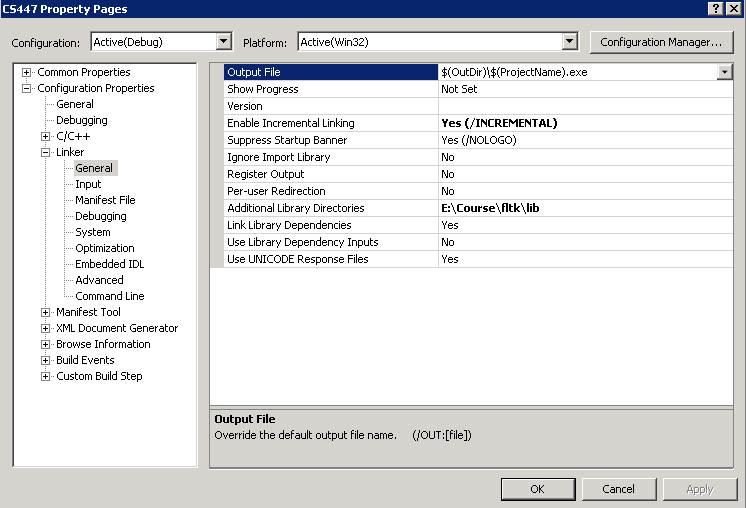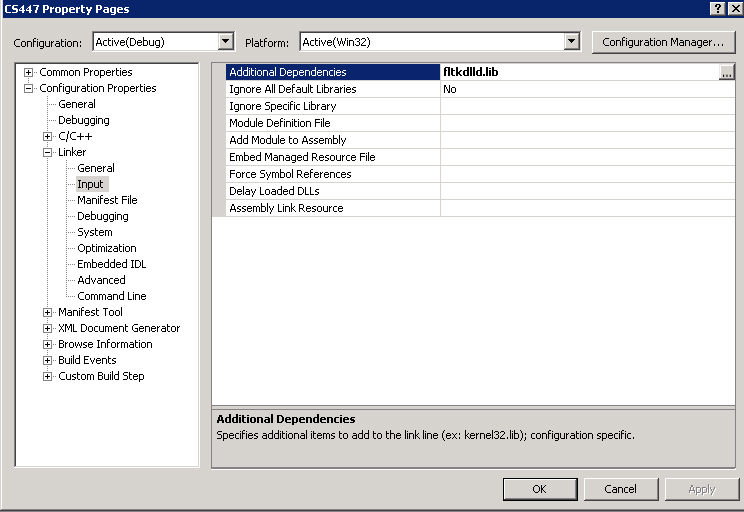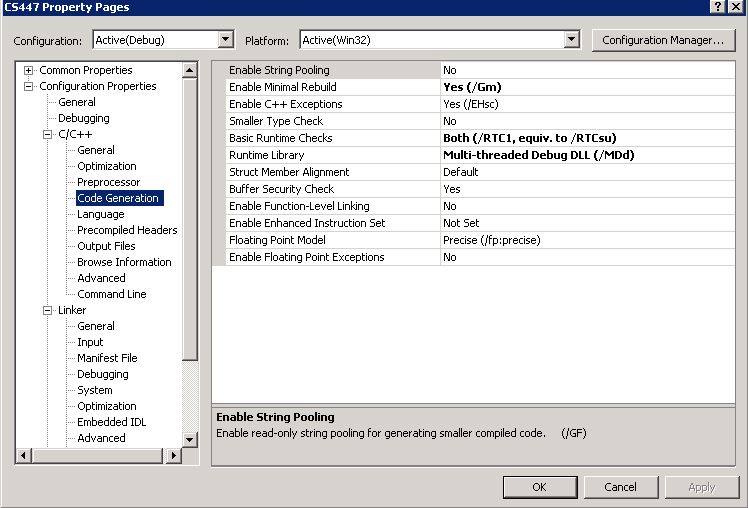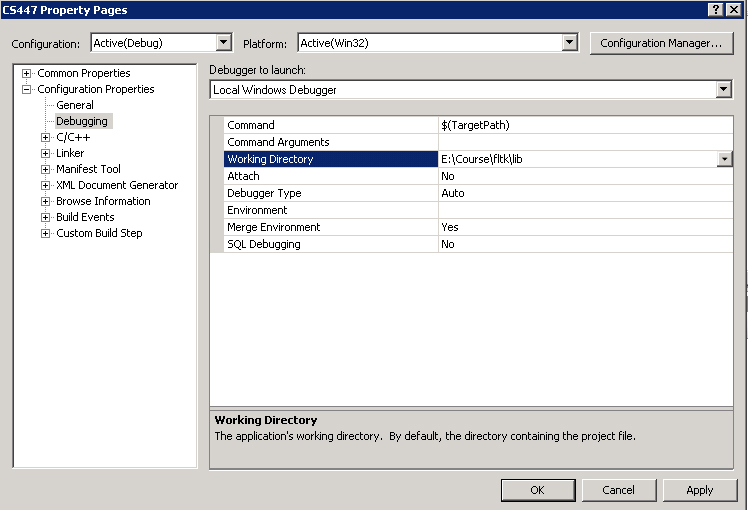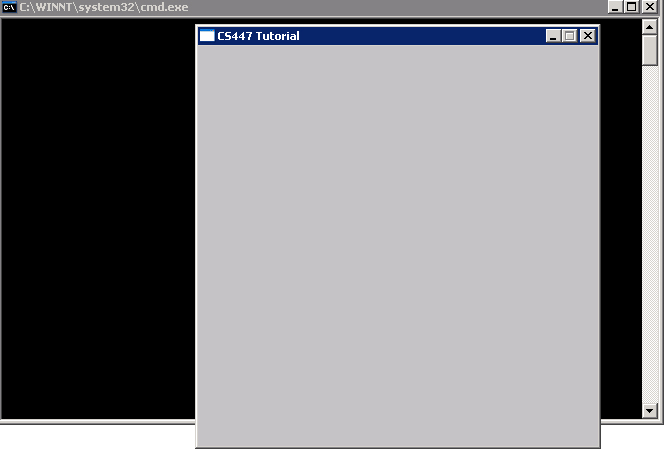We've now got all the code we need and we almost ready to build our
project but first we must tell VS where to find the FLTK files that
we are using. We must tell it where to find the header files
(*.h)
that we've included in our project, such as Fl.h. It also need to know
where to find the FLTK library that we've built for you.
Choose Project -> Properties
from the VS menus and you should get the dialog to the
right. In the left hand pane go to Configuration Properties -> C/C++ ->General,
then choose Additional Include Directories.
Suppose you've placed a copy of all FLTK in E:\code\fltk.
So select this folder as shown in the dialog.
Click OK.
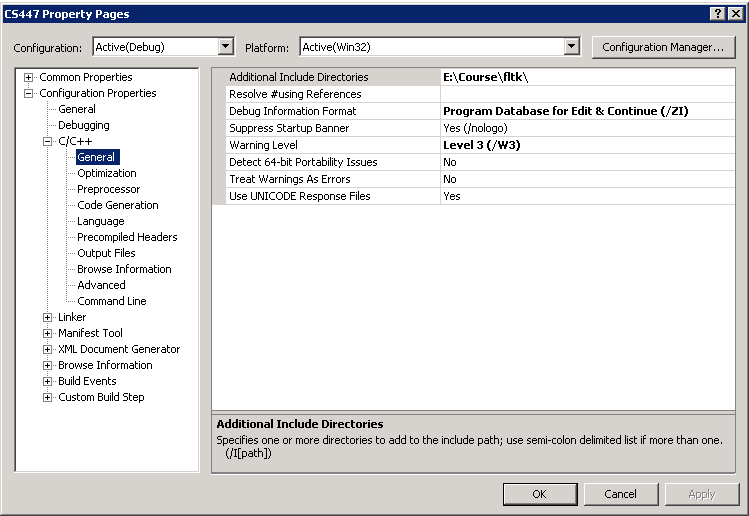
We now need to tell VS where to find the pre-built fltk libraries. Similarly, choose Project -> Properties from the VS menus and you should get the dialog to the right. In the left hand pane go to Configuration Properties -> Linker ->General, then choose Additional Libary Directories. Input E:\code\fltk\lib, supposing you placed a copy of FLTK there.
Click OK.
